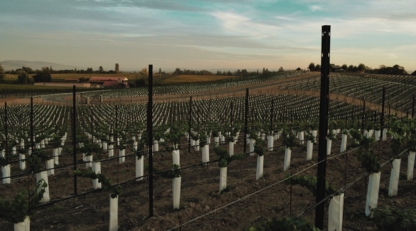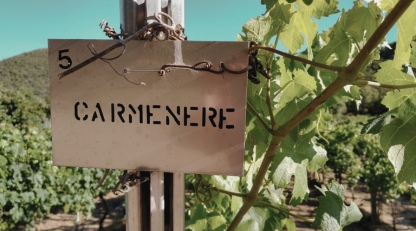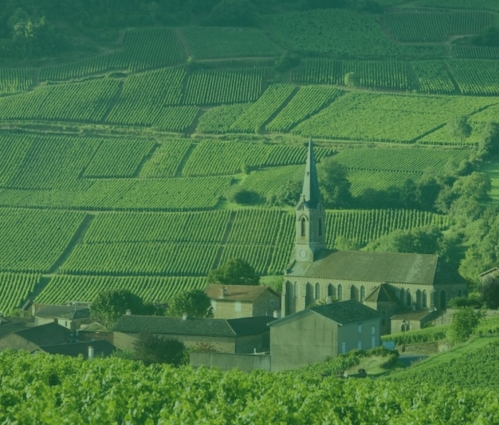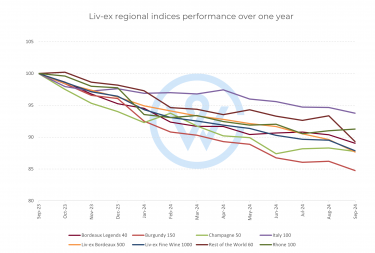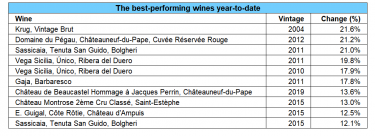With vineyard temperatures on the rise in Bordeaux, WineCap spoke with leading Bordeaux estates about how they’re fighting back to protect both wine heritage and future generations.
- Adaptive viticulture is a widespread method of coping with climate change.
- Traditional and experimental moderating methods are both in use.
- High temperatures can be beneficial for recent and, potentially, near-term vintage quality.
Vineyard layout, clones, rootstocks, and varietal proportion: Château Beau-Séjour Bécot, Château Margaux, Château La Conseillante, and Château Pavie
To moderate the impact of climate change, Julien Barthe, co-owner of Beau-Séjour Becot has implemented a radical vineyard layout change to prevent berry burn. ‘The vineyard was formerly planted in an east-west direction. From mid-day to 1 pm, the sun arrived on the west side, right on the berries. This is why we changed the orientation from north to south — to avoid the same effect.’
Philippe Bascaules, managing director of Château Margaux has taken the same approach. ‘We decided to change the orientation of our rows,’ he told WineCap.
Barthe also explained that the house is using new clonal selections of Cabernet Franc to help retain the freshness in its Merlot-dominant blends.
Cultivating resilient vines was, similarly, the approach of Marielle Cazaux, the general manager of La Conseillante. ‘Climate change is a big question. We are thinking long term about rootstocks and grape variety.’
Referring to early-ripening Merlot’s vulnerability to climate change, Cazaux stressed the importance of preserving its classic wine profile. ‘We are adapting the rootstock to be more resilient against hydraulic stress and thinking about changing the clones a little bit.’
Olivier Gailly from Château Pavie said that his team had already begun experimenting with climate-resistant proportions of grape varietals at the turn of the century. The house replanted its vineyards with an increased quantity of later-ripening Cabernet Sauvignon and similarly-behaving Cabernet Franc to blend with Merlot. This proportion has helped to maintain wine freshness as temperatures rise.
Adaptive vineyard management: Château Cheval Blanc, Château Angelus, and Château Calon Segur
Traditional vineyard management techniques such as dense canopy cultivation, durable old vine revival, and biodiversity practices that support the mitigation of climate change have been intensified around Bordeaux since at least the millennium. While some methods have a short time frame, Pierre-Oliver Clouet, winemaker and technical manager at Château Cheval Blanc, which famously voluntarily withdrew from the Saint-Émilion classification system in 2021, spoke about the need for a long-term view.
‘We should adapt today to preserve Cheval Blanc in 20 years,’ he told WineCap. ‘Global warming is going to be a problem because, with two or three more degrees, the wine quality is still going to be good enough, but the identity will not be the same.’
Clouet said the château implements cover crop techniques to protect the soil from high temperatures, enhance soil nutrients and resilience, and to conserve rainwater more efficiently. He has also planted trees to expand cooling shade for vines and is training plants that are heat- and disease-resistant.
Saint-Émilion peer Château Angelus, which also opted out of the appellation’s classification system in 2022, uses a device that assists with hydrating and cooling vines in a region with stringent irrigation rules. President and CEO Stéphanie de Boüard-Rivoal explained: ‘For hail, we have a device that is a balloon that auto launches. It’s blown with helium and contains salt crystals so when it’s swollen by a cloud, it spreads out the salt and allows the ice to melt. Instead of having hail, we have rain,’ she told WineCap.
Cooling heat-stressed plants was also a priority for Vincent Millet, general manager of Château Calon Ségur. He told WineCap how he and his team are refining a mechanism to conserve cooling dampness in vineyard plots: ‘We are setting up specific enclosure systems which can trap and return humidity to the plant.’
Research and experimentation: Château La Dominique
While age-old vineyard methods are adapted to counter the perils of global warming, innovation is a key part of Château La Dominique’s philosophy.
General manager, Gwendoline Lucas, detailed the producer’s efforts in this area. ‘We are very concerned about climate change, so we started working with Bordeaux Sciences Agro years ago to do some research about how we can better manage our vineyard,’ she told WineCap. ‘We are also part of VitiREV, which is the first European fund specialising in viticultural ecological transition. We are like a laboratory testing new solutions from startups. We see a lot of proposals and when we think that something is quite interesting, we try it in our vineyard.’
Beneficial natural environment: Château Pavie, Château Canon, Cos d’Estournel, and Château Margaux
While acknowledging the potential hazards of climate change, several producers told WineCap that they had, to date, avoided any serious consequences of rising temperatures across Bordeaux by dint of resilient terroir. Whether location or soil composition, nature provides a mitigating influence to the heat, ensuring balance and traditional character in yield and wines.
‘We are fortunate to have this exceptional limestone terroir which really keeps a lot of freshness in the wine,’ said Olivier Gailly, commercial director of Saint-Émilion house Château Pavie. ‘Then we have the forests around the château which are very important to keep a bit cooler.’
Soil make-up was also cited by Nicolas Audebert, winemaker and general manager at fellow Saint-Émilion house, Château Canon. Referring to climate change, he said: ‘We see it in berry ripeness every day, but we still have a long way to go before we get into trouble because we are on a fantastic, limestone terroir.’
The water-retaining freshness of limestone guarantees that vines do not suffer severe heat stress, Audebert added, also noting the benefits of micro-practices.
‘There are a lot of fantastic wine producing regions in the world where the climate is warmer than here and they manage,’ he said. ‘I spent ten years in Argentina making wine so I have some experience of how we can evolve our viticulture to protect it. There are thousands of small things we can adapt to keep that elegant, vibrant, precise, style we like.’
Vineyard coolness was also cited by Charles Thomas, commercial director at Cos d’Estournel. ‘We are lucky enough to be in the north part of the Médoc where we have the Gironde River providing freshness to the vineyard.’
Not all Bordeaux producers regard climate change unfavourably and are optimistic that, with a responsive approach, the trials of the decades ahead will be overcome.
‘I think we are just at the beginning,’ Philippe Bascaules of Château Margaux told WineCap. ‘For the last ten years, summer drought and heat have helped us to make even better wine. But, of course, we know that if the temperatures continue to increase, we will be in big trouble because it will not only change the quantity of wine but also the style of the wine we want to produce.’
To this end, the chateau continues to be attentive and flexible in the face of global warming. ‘At least for the next 50 years, I’m quite optimistic that we will find the parameters and the techniques to continue to produce the wine of Château Margaux as it exists today,’ he said. ‘I don’t know about after that because who knows what the temperature will be in Bordeaux in 50 years?’
See also our Bordeaux I Regional Report.
